- Home
- James L. Swanson
Chasing King's Killer: The Hunt for Martin Luther King, Jr.'s Assassin Page 6
Chasing King's Killer: The Hunt for Martin Luther King, Jr.'s Assassin Read online
Page 6
Although Ray continued to study his psychology and self-improvement books, he wanted more than mental growth—he also wanted to physically look better, or, at least, different. In February, he decided to have plastic surgery. He wanted a rhinoplasty to give his nose a narrower, more refined shape and make it less pointed. He also considered having his ears pinned back. He thought they stuck out too much.
On March 5, Ray visited a Los Angeles plastic surgeon, Dr. Russell Hadley. Ray handed over two hundred dollars in cash (probably gotten from minor criminal activities) for the operation, and the doctor performed the rhinoplasty immediately. Ray told him that any cosmetic work on his ears would have to wait until he had more money. As Ray recalled, “I went back to the hotel room and while the nose was still numb, I removed the tape and pushed the nose to the other side and down to change the way the doctor had shaped it in case he remembered me.” Such squeezing and reshaping must have been agonizing. But it must have worked, because later, Dr. Hadley—like so many people who had interacted with Ray—remembered almost nothing about him. As Hadley said, “Faces are my business. But what amazes me is that, try as I might, I cannot remember anything at all about Eric S. Galt.”
Ray had achieved his objective: to be unrecognizable. He believed that a criminal should have a face “which nobody can describe,” and, as it turned out, nobody could.
In the middle of March 1968, Martin Luther King, Jr., flew to Los Angeles. It was the first time that he and James Earl Ray had been in the same city. On March 16, King spoke at Disneyland. The newspapers publicized his visit. But Ray made no effort to see him.
The next day, on March 17—St. Patrick’s Day—King delivered a sermon. His friend Reverand James Lawson had made a special request. Would King please fly to Memphis the next day and speak at an evening rally? The death of the two black garbage collectors there in February had provoked the city’s sanitation workers to go on strike for higher pay, better benefits, and safer working conditions. Because they were black, Memphis was treating them as second-class citizens. A visit from King, explained Lawson, would help their cause. This was more than a labor dispute. It had become a rallying cry for civil rights. King agreed to come. He couldn’t say no to the people in Memphis, to people who needed him.
On the same day, James Earl Ray did an odd and unexpected thing. He filled out change of address cards at the St. Francis Hotel. He packed all of his possessions—his portable television, his transistor radio, his camera equipment, his clothes, his personal papers, his pistol, and his books, including his much-valued self-help guides—into the trunk of his white Mustang. Then he got in the car, revved up the engine, and started driving east. Bizarrely, Ray’s destination was the city of Selma, Alabama, a hot spot of the civil rights movement, where marchers were brutally attacked on Bloody Sunday in March 1965 when they tried to cross the Edmund Pettus Bridge.
It was curious that Ray’s decision to leave California coincided with King’s trip to the West Coast. On March 17, 1968, something must have happened to James Earl Ray. He had been an aimless wanderer, avoiding recapture and a return to prison. Now he was a man on a mission. It was as if he had been slumbering for a year, in a kind of suspended animation while he pursued various oddball quests: bartending school, dance lessons, hypnosis, self-help books, plastic surgery, a mail-order locksmithing course, lounging in bars, promoting George Wallace’s presidential campaign, and cheap amateur photography and filmmaking. Ray’s vagabond lifestyle included interstate travel to Illinois, Missouri, Louisiana, Alabama, California, and more, plus foreign travel to Mexico and Canada. It is likely that he also committed a string of bank robberies along the way.
Like a film actor, Ray did all this using a collection of false names, alternative identities, deceptive stories, and various personal looks. Ray tried on new personas as easily as another man might try on a new suit of clothes. He presented an odd mix of habits and appearances. In a rumpled flannel shirt and long hair, he resembled a manual laborer. In a neat suit and tie with his hair combed back, and wearing black plastic eyeglasses, he could impersonate a businessman or a professor. Like a chameleon, he blended into his surroundings, a man of many faces. Through the years, so many people had forgotten exactly what he looked like, or what he said. For much of his life, Ray had been a most forgettable man.
That all came to an end on Sunday, March 17, 1968. Like a caged homing pigeon released to the sky, or a hibernating animal awakened by nature’s call, he responded to an inner signal that only he could hear and that would direct his movements over the next three weeks. It was as though a silent, invisible alarm inside him had rung, summoning him to the South.
What had motivated James Earl Ray to abandon his easy California life and drive across the country?
He had decided to kill Dr. Martin Luther King, Jr.
James Earl Ray was an unlikely assassin. He was no trained hit man. He had never killed or even tried to kill a man in his life. Nor was he an expert marksman with pistols or rifles. There is no evidence that he had escaped from prison with the intention to murder Dr. King, or anyone else.
While Ray drove across America, Martin Luther King was in Memphis to speak on March 18 to the striking sanitation workers at the Mason Temple. To protest their dehumanizing working conditions, the men had been picketing. They had carried cardboard signs that said I AM A MAN. That evening, King spoke to them about economic justice, about equal access to jobs and pay. He had no idea that even as he spoke, day by day, hour by hour, a stranger was driving across America to find him and kill him. King even agreed to come back to Memphis in a few days, on the 22nd, to lead a march through the streets.
But around midnight on March 21, King was stranded in Birmingham, Alabama. A freak snowstorm had paralyzed Memphis and forced the cancellation of the march the next day.
On March 22, after driving for four days, James Earl Ray arrived in Selma, Alabama. He checked into the Flamingo Hotel, located just a few blocks from the Edmund Pettus Bridge, the site of the Bloody Sunday violence. By reading the local newspapers and watching the news on television, Ray could keep track of King’s schedule. Although King was supposed to speak in Selma that day, Ray was not ready to take action. He needed equipment and a plan.
On March 23, King spoke at a rally for the Poor People’s Campaign in Augusta, Georgia, a few hundred miles from Selma. This was to be a rally for people of all races—including blacks and whites. King believed that all poor people were united by their poverty and shared a common cause. He seemed to be moving from championing civil rights to a more universal call to help all disadvantaged people. A march in Washington, DC, would illustrate this.
On that same day, Ray moved on toward Atlanta, King’s hometown. Ray arrived there the next day, March 24, and checked into a cheap rooming house in a seedy part of town. The rent was $1.50 per night, and he paid in advance for a one-week stay. He wanted time to stalk King and to obtain information on his schedule and movements. For the next three days, from March 25 to 28, while Martin Luther King, Jr., was in New York and New Jersey, Ray remained at the Atlanta rooming house, waiting for King’s return.
On March 28, King flew to Memphis. This was his second attempt to lead a march in support of the striking sanitation workers after the protest he had planned to lead there on March 22 was canceled. But it turned out to be a disaster. A group of young radicals who were called “The Invaders” disrupted the event and began smashing shop windows.
King shouted to Ralph Abernathy: “There’s violence breaking out!”
For more than a decade, Abernathy had been Martin Luther King, Jr.’s closest advisor, confidant, and partner in the leadership of the civil rights movement. King was the public face of the cause while Abernathy was more of a behind-the-scenes influence. They were inseparable; Abernathy was like a brother to King, an alter ego. They had shared the ups and downs of the movement, the hardships of life on the road. If you saw Martin Luther King, Jr., you usually saw Ralph Abernathy at his side
. Each man made the other stronger. Some people even thought that Abernathy should have shared in the Nobel Peace Prize King received.
King knew he could not be present during a violent demonstration. That would undermine the reputation he had earned for seeking justice through peaceful means. He, Abernathy, and a few others left the march and took refuge at a hotel. It was an embarrassing failure. King wanted to get out of Memphis.
In the meantime, James Earl Ray had narrowed down a plan.
He decided that he would not use his pistol to assassinate King. Using a handgun would require him to get close. That meant witnesses. And it risked capture or even death at the hands of King’s enraged followers. He did not possess the proper weapon to do it.
So, on March 29, Ray drove more than one hundred miles from Atlanta, Georgia, to Birmingham, Alabama, and visited the Aeromarine Supply Company, a sporting goods store. After inspecting several weapons, he selected a Remington Gamemaster .243-caliber, bolt-action hunting rifle. Ray also asked for a telescopic scope and ammunition. The total cost was $248.59—a relative value of over a thousand dollars today. A customer at the store told Ray that he had picked out quite a rifle and asked what he planned to hunt with it. Using the false name of Harvey Lowmeyer, he paid for it in cash. The clerk told Ray to come back later and pick up the rifle after an employee had time to mount the scope on the weapon. He did.
It was easy to buy a firearm in those days. Gun sales were not as regulated by the government as they are today, and buying one was as easy as purchasing a power drill, or a chain saw, or any other tool at a hardware store. In fact, many hardware stores and department stores sold firearms. In the more laid-back gun culture of the 1960s, a customer did not even have to present identification. The store and the manufacturer verified and retained only one type of record—the serial number stamped on each firearm shipped to a particular retailer, plus a copy of the sales receipt.
Later that day, Ray called the store back, saying he had made a mistake. He wanted to exchange the rifle for a more powerful one. He claimed that his brother had told him that he had bought the wrong gun. That was fine with Aeromarine—it meant that this customer would probably upgrade to a more expensive weapon. However, they were about to close and asked if he could come back tomorrow to get a different rifle.
So on the morning of March 30, Ray returned to the Aeromarine store to exchange his rifle. He examined another one, a Remington Gamemaster model 760 hunting rifle. It fired a powerful .30-caliber bullet that was twice as heavy as the bullets for the rifle he had selected the day before. That meant the rifle had more killing power.
Unlike the rifle he had returned, which required the shooter to operate a manual bolt to eject a fired round and load a fresh one into the chamber, the model 760 was a pump-action that did not require the shooter to operate a manual bolt. This feature allowed a shooter to fire faster and keep his eye on the target. Ray chose a Redfield adjustable scope. He paid for the more expensive weapon and was told to come back at 3:00 p.m. to pick it up, again to give the shop employee time to mount the scope on the rifle. Ray also took two boxes of ammunition that held twenty rounds each. He drove his purchases back to his Atlanta rooming house.
The same day, on March 30, King flew from Memphis to Atlanta, where he held a staff meeting at his headquarters, Ebenezer Baptist Church. He vowed to return to Memphis a third time to lead a successful march there, but his aides rebelled. Several argued that he should not return, believing that Memphis was a distraction from their other work. Why go back? Hadn’t he done enough there already? Going back only invited another disaster. Then King and his advisors argued about the planned Poor People’s March. Some of them said it was a bad idea, and that it would fail and hurt the cause. King got frustrated and walked out of the meeting. He wanted to get out of town.
The next day, on March 31, Martin Luther King, Jr., delivered a sermon at the famous National Cathedral, a huge neo-Gothic church, in Washington, DC. He preached about more than civil rights. After the service, he said: “I would like to mention another thing closely related to racism—poverty.” He reminded people that the Poor People’s Campaign was coming to Washington, DC, that summer. About Vietnam he said: “I am convinced that it is one of the most unjust wars that has ever been fought in the history of the world.”
Later that night, in a historic televised announcement, President Johnson spoke to the American people. The text of the president’s speech had been a closely guarded secret. When he began speaking to the television cameras in the Oval Office at 9:00 p.m. EST on March 31, even his closest aides did not know what he was going to say. During the speech, LBJ dropped a bombshell: “I shall not seek, and I will not accept, the nomination of my party for another term as your president.” Controversy over the Vietnam War had driven him from the presidency.
March 31 had been a momentous day, filled with big events. Martin Luther King had given his last sermon. Lyndon Johnson had withdrawn from the presidential race of 1968. And, just one day earlier, James Earl Ray had bought a rifle.
The next day, on April 1, the Atlanta Constitution newspaper reported that in a few days, King would return to Memphis. Reading the newspaper was the best way for Ray to keep track of King’s movements, so he probably read the story.
At 10:00 a.m., he dropped off some laundry at the cleaners. He had grown impatient waiting for King. Martin Luther King’s schedule was unpredictable and it often changed at the last minute. Ray also might have decided that Atlanta was not a good place for an assassination. A white man in a light-colored Mustang would stand out and attract attention in King’s neighborhood. And a sniper attack on King as he arrived for church or left after the service would have to be carried out in daylight. That plan was too risky, and it might be difficult to escape.
Ray decided to follow King to Memphis. On April 2, Ray packed the rifle and some of his possessions into the trunk of his car. He left some things behind in his room, including his TV. Driving west out of Atlanta, he took the highway heading toward Tennessee.
Martin Luther King, Jr., spent the night of April 2 at his home in Atlanta with his wife, Corrie. The Abernathys came over for dinner, and Martin and Ralph talked about their flight to Memphis the next morning.
It was King’s last night with his family.
On the morning of April 3, Ralph Abernathy picked up King at his home and drove to the Atlanta airport. Once they boarded the plane, the flight crew announced that there would be a slight delay before they got airborne. Someone had phoned in a bomb threat. The plane would have to be searched. King was not alarmed. Threats like this were routine and almost business as usual for him. White racists may have bombed black homes and churches, but they had not yet figured out how to blow a plane out of the sky. Martin joked to Ralph: “Well, it looks like they won’t kill me this flight.”
Abernathy reassured him: “Nobody’s going to kill you, Martin.”
It was King’s third trip to Memphis in three weeks, and his third attempt to lead a march to support the striking sanitation workers. The unseasonal, freak snowstorm had prevented the first one. Rioting and violence had ruined the second. King’s aides had objected to these multiple visits. It was almost as if, via a series of ill omens, fate had warned him to stay away from Memphis.
When King landed, his regular driver in Memphis, Reverand Solomon Jones, picked him and Abernathy up at the airport. Jones always drove a white Cadillac that a local funeral home loaned for King’s convenience whenever he was in town. Jones knew where to go—the Lorraine Motel, a black-owned business that rented rooms to blacks as well as whites. It was King’s favorite place to stay whenever he came to town.
Meanwhile, James Earl Ray was still on the road, closing the distance to Memphis.
At the Lorraine Motel, King’s entourage awaited him: James Bevel, James Orange, Jesse Jackson, Hosea Williams, Chauncey Eskridge, Bernard Lee, Dorothy Cotton, Andrew Young, and others. A South African documentary filmmaker, Joseph Louw, and a
black New York Times reporter, Earl Caldwell, were also there. King’s brother, A. D. King, and Georgia Davis, a young state senator from Kentucky, were expected later.
King convened a strategy meeting at Reverand James Lawson’s Centenary United Methodist Church. The city had obtained an injunction, or court order, against the march, arguing that after the riot last time, it was too dangerous. The city did not want to take the risk that King might be harmed. Back in his room at the Lorraine Motel, King met with his lawyer, Lucius Burch, to discuss how to fight the city’s injunction. King told the lawyer that the march was vital. Burch left to prepare the documents necessary to oppose the injunction.
At a fire department station within sight of the Lorraine Motel, two black Memphis police officers were on duty with orders to keep an eye on King. They were not there to spy on him or to gather information to use against him. Their assignment was more benign: to make sure that nobody created any trouble or disturbances. The city wanted the visit to go smoothly. The policemen took up their positions. From one of the windows, they could see the front door to King’s room. Soon, the policemen were ordered to leave their observation post and go to King’s next stop, to be in position there before he arrived.
Martin Luther King had agreed to speak at a big public rally that night at the Mason Temple. During the afternoon, dark, threatening skies formed over the city. By 7:00 p.m., heavy rain and howling winds seemed to shake the rafters at the Lorraine Motel and the Temple.
James Earl Ray arrived in Memphis that day around 7:15 p.m. He drove his Mustang into the parking lot of the New Rebel Motel at 3466 Lamar Avenue, on the southwestern edge of the city. An outdoor neon sign of a Civil War colonel paid homage to the old Confederate States of America. Ray checked in, went to his room, and settled in for the evening. Having found shelter from the storm, he had no intention of going out with his rifle tonight.

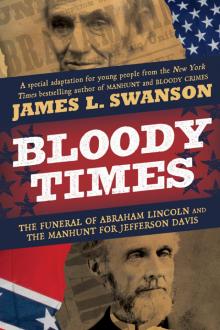 Bloody Times: The Funeral of Abraham Lincoln and the Manhunt for Jefferson Davis
Bloody Times: The Funeral of Abraham Lincoln and the Manhunt for Jefferson Davis Bloody Crimes: The Funeral of Abraham Lincoln and the Chase for Jefferson Davis
Bloody Crimes: The Funeral of Abraham Lincoln and the Chase for Jefferson Davis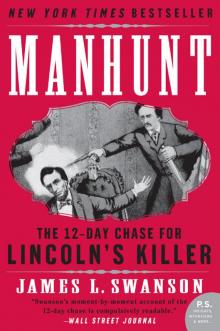 Manhunt: The 12-Day Chase for Lincoln's Killer
Manhunt: The 12-Day Chase for Lincoln's Killer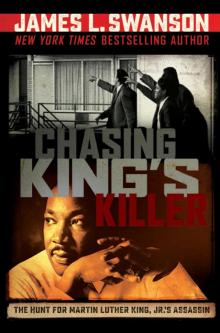 Chasing King's Killer: The Hunt for Martin Luther King, Jr.'s Assassin
Chasing King's Killer: The Hunt for Martin Luther King, Jr.'s Assassin Bloody Crimes
Bloody Crimes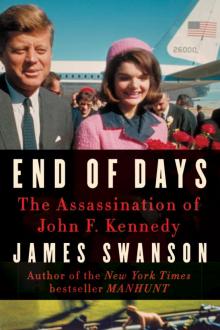 End of Days
End of Days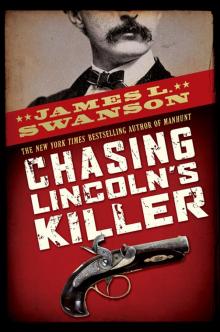 Chasing Lincoln's Killer
Chasing Lincoln's Killer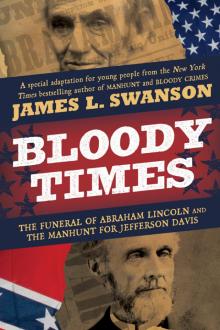 Bloody Times
Bloody Times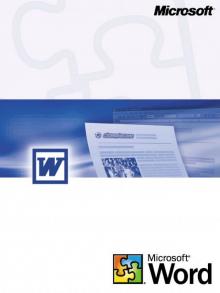 Manhunt
Manhunt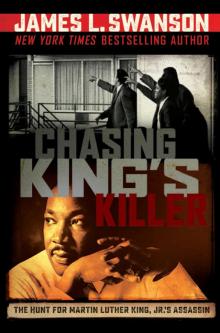 Chasing King's Killer
Chasing King's Killer